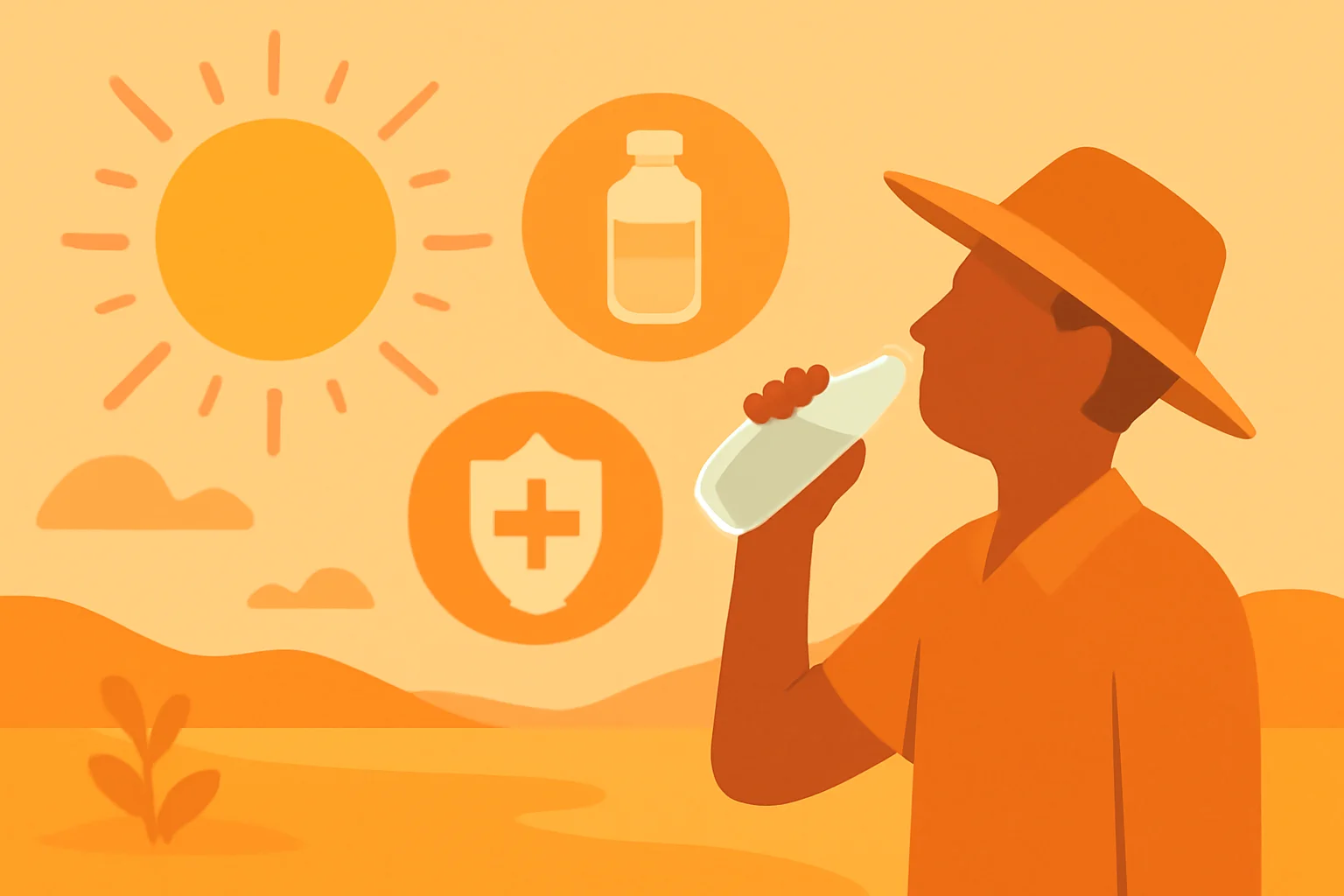
Heatwave: How Can We Protect Ourselves Against Extreme Temperatures?
The heatwaves are among the most visible and problematic consequences of climate change. These extreme weather phenomena are particularly noticeable during the summer months and are becoming increasingly frequent due to global warming. Heatwaves pose serious challenges not only to natural ecosystems but also to human health, agriculture, and water supply. As temperatures continue to rise, people must rethink their lifestyles, adapt to the changed circumstances, and prepare for extreme weather situations.
The consequences of heatwaves affect not only physical comfort but also present challenges for society in many other aspects. The increase in traffic accidents, the emergence of heat stroke, and other health problems are just as much linked to heatwaves as the decline in agricultural production or water shortages. Meanwhile, raising awareness about heatwaves and appropriate adaptation plays a key role in mitigating negative consequences.
Therefore, it is important to thoroughly understand the causes, effects, and prevention possibilities of heatwaves so that we can face this global challenge prepared.
What is a heatwave?
The concept of a heatwave generally refers to periods when the temperature significantly exceeds the usual summer average. The occurrence of this phenomenon may vary across different geographical areas, but fundamentally, heatwaves are the consequences of changes in the atmosphere and climate. In meteorological literature, a heatwave is often defined as a situation where the daily maximum temperature exceeds the local average for at least five consecutive days.
High-pressure systems often underlie the formation of heatwaves, which prevent air movement, causing warm air to stagnate over the ground for extended periods. Additionally, urban areas, where the heat-absorbing effect of concrete and asphalt can cause temperatures to rise even further, also exacerbate the effects of heatwaves. Due to the formation of heat islands, temperatures in cities are often 5-10 degrees higher than in suburban or rural areas.
Heatwaves not only signify rising temperatures but are often accompanied by increased humidity. High humidity, especially during hot periods, intensifies people’s perception of heat, so the combination of temperature and humidity can exacerbate the effects of heatwaves. In such environments, the risk of heat stroke and cooling needs also significantly increase, leading to further problems.
The connection between heatwaves and climate change is becoming increasingly evident. As a result of global warming, the frequency and intensity of heatwaves are increasing, posing a serious long-term threat to human health and the environment.
The effects of heatwaves on health
The health impacts of heatwaves encompass a wide spectrum and can be particularly dangerous for the most vulnerable groups, such as the elderly, children, and those with chronic illnesses. The high temperatures experienced during heatwaves can lead to various health issues, including an increased risk of heat stroke, heat exhaustion, and dehydration.
Heat stroke is a severe condition that occurs when body temperature rises to 40 °C or higher. Symptoms of heat stroke include headache, dizziness, nausea, muscle cramps, and even loss of consciousness. To avoid such situations, it is important to consume enough fluids during hot weather and to avoid direct sunlight.
High temperatures also increase the risk of cardiovascular problems. People’s hearts and circulatory systems must cope with the stress caused by heat, which can be particularly dangerous for those with heart conditions. Heat triggers a stress response in the body, which can elevate heart rate and blood pressure.
Heatwaves can also affect mental health. Heat can manifest as stress, anxiety, and depression, especially in those who live alone or cannot escape the warm environment. The combination of heat and high humidity also deteriorates sleep quality, further exacerbating mental conditions.
Therefore, it is essential to pay attention to our environment and our health during heatwaves. Staying in the shade, wearing light clothing, and ensuring proper hydration can all help endure the heat.
The impact of heatwaves on agriculture
From an agricultural perspective, heatwaves pose significant challenges. Extreme temperatures directly affect the growth and development of plants, which can reduce crop yields in the long term. High temperatures can lead to decreased soil moisture content, resulting in water shortages for plants. Water scarcity causes stress to plants, weakening their resistance to diseases and pests.
As a result of heatwaves, the process of photosynthesis in plants may also be disrupted, reducing nutrient and yield formation. Extreme temperatures can affect the taste and nutritional content of fruits and vegetables, resulting in adverse effects for consumers.
Heatwaves not only affect crop production but also livestock farming. Animals, particularly cattle and poultry, can suffer from heat stress, which can reduce milk production and growth rates. Due to the heat, animals may become less appetizing, which also negatively impacts production.
For agricultural producers, innovative solutions are needed to cope with heatwaves. Precision agriculture, water-saving irrigation techniques, and the development of temperature-resistant plant varieties can all contribute to the sustainability of agricultural production during heatwaves.
Prevention and adaptation to heatwaves
Adaptation and prevention related to heatwaves play a key role in protecting communities and individuals. Monitoring weather forecasts and warnings can be a first step in avoiding heatwaves. With the right information, the public can prepare for extreme temperatures and take appropriate measures.
Maintaining a healthy lifestyle can also contribute to resilience against heatwaves. Proper hydration, a balanced diet, and regular exercise can all help the body adapt to heat. Furthermore, it is important for communities to support one another, especially vulnerable groups such as the elderly, the sick, or those living alone.
Infrastructure development is also essential. Greening cities, creating shaded areas, and installing water retention systems can all help reduce the effects of heatwaves. Adapting transportation systems and public services to temperature changes is also essential.
Thus, the key to combating heatwaves lies in awareness, adaptation, and community solidarity. The preparedness of individuals and communities, along with taking appropriate measures, is crucial in alleviating the consequences of extreme temperatures.
Note: This article does not constitute medical advice. In case of health problems, please always consult a doctor!

